Body length: 7–15 mm.
Eyes: eye interommatidial setaeseta:
a sclerotized hair-like projection of the cuticle
absent, eye entire/shallowly emarginateemarginate:
notched at the margin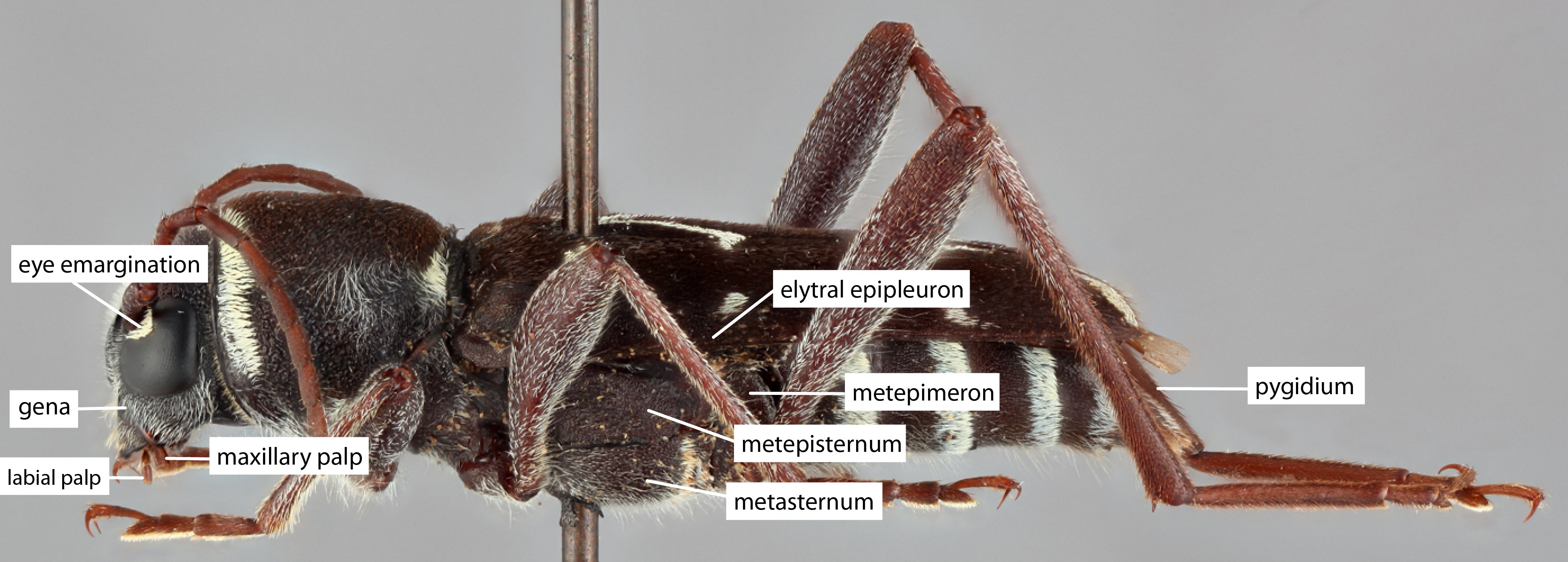 , eye ommatidial density fine.
, eye ommatidial density fine.
Antennaeantenna:
in larval and adult insects, paired segmented appendages, borne one on each side of the head, functioning as sense organs and bearing a large number of sensilla
: antennal length barely surpassing pronotumpronotum:
the upper and dorsal part of the prothorax
or reaches between basebase:
the part of any appendage or structure that is nearest the body
and end of elytraelytron:
the leathery forewing of beetles, serving as a covering for the hind wings, commonly meeting opposite elytron in a straight line down the middle of the dorsum in repose
, antennal flagellar segments elongateelongate:
much longer than wide
, scapescape:
the first proximal segment of the antenna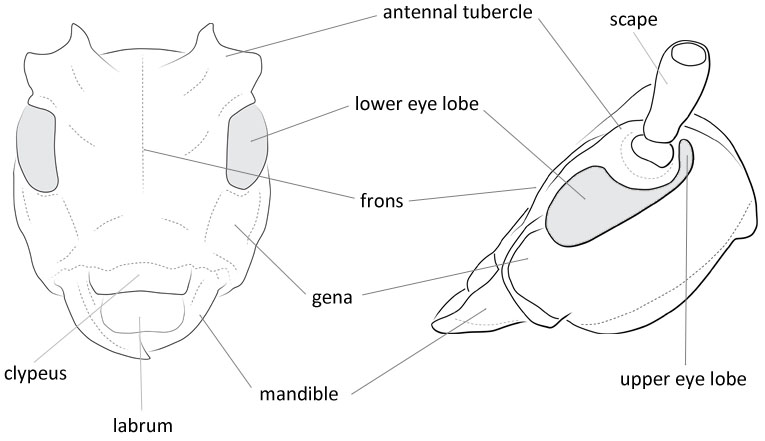 smooth/punctate at apexapex:
smooth/punctate at apexapex:
end of any structure distad to the base
, antennal scapescape:
the first proximal segment of the antenna ≥ segment 3 or segment 3 > scapescape:
≥ segment 3 or segment 3 > scapescape:
the first proximal segment of the antenna .
.
Pronotumpronotum:
the upper and dorsal part of the prothorax
: pronotumpronotum:
the upper and dorsal part of the prothorax
shape transversetransverse:
broader than long
or subquadratesubquadrate:
not quite a square
, pronotumpronotum:
the upper and dorsal part of the prothorax
lateral armature absent.
Prosternum: prosternal processprosternal process:
a posterior extension of the prosternum between the coxae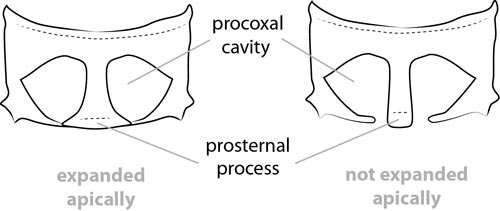 dilated at apexapex:
dilated at apexapex:
end of any structure distad to the base
, procoxal cavities open posteriorly.
Elytraelytron:
the leathery forewing of beetles, serving as a covering for the hind wings, commonly meeting opposite elytron in a straight line down the middle of the dorsum in repose
: elytral length reaching or close to end of abdomen, elytral apicesapex:
end of any structure distad to the base
rounded or truncatetruncate:
cut off squarely at the tip
or with tooth or spinespine:
a protuberance with an acute (sharp) distal end
, elytral color pattern present.
Legs: visible tarsomerestarsomere:
subdivision or article of the tarsus, usually numbering from two to five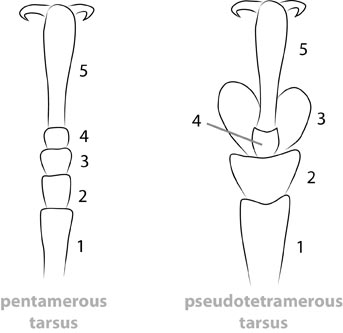 : 4, femora clavateclavate:
: 4, femora clavateclavate:
thickening gradually toward the tip
or slender, protibial spursprotibial spur:
sclerotized spine(s) located at the distal tibia; can be single, double, or absent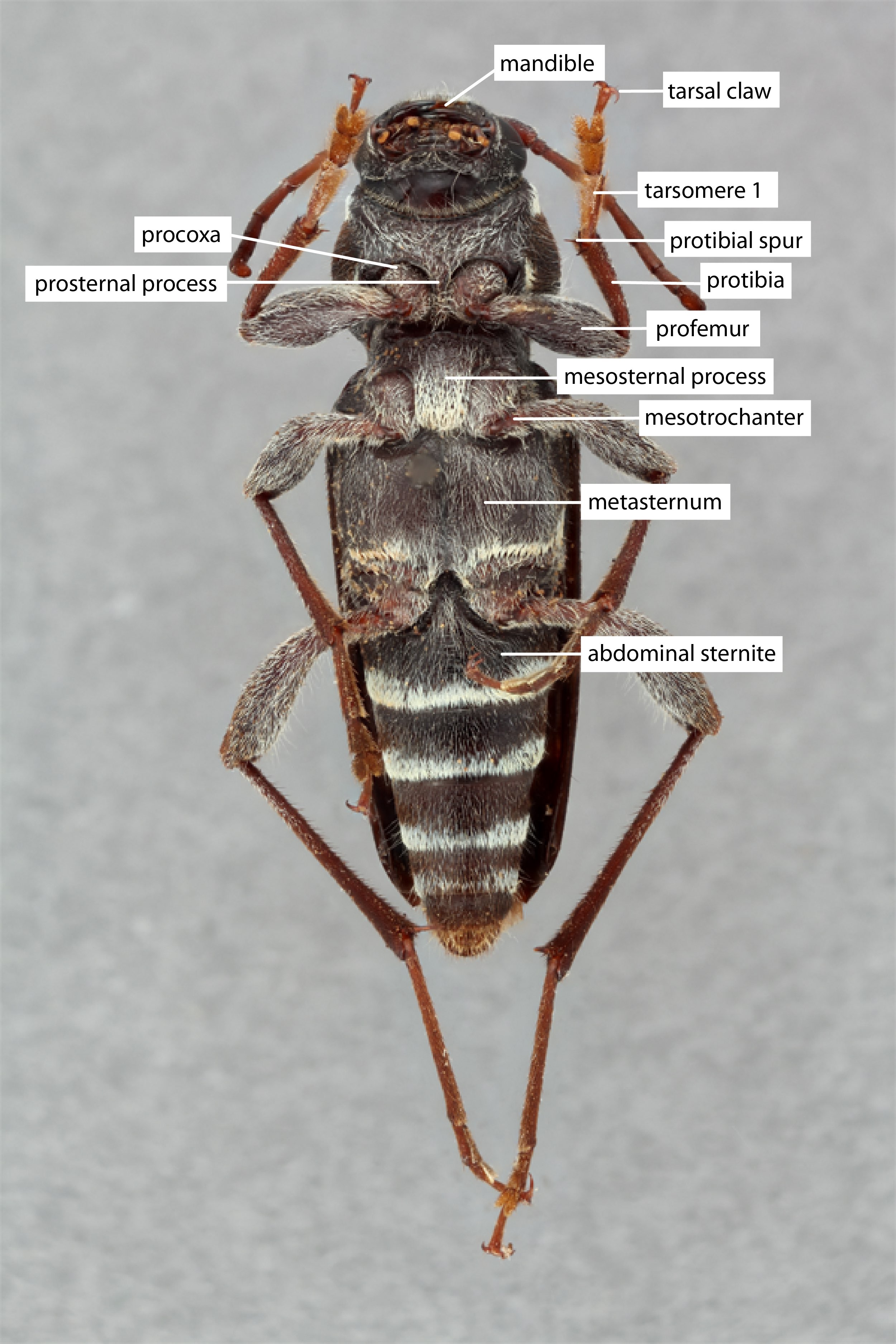 : 2, tarsal clawstarsal claw:
: 2, tarsal clawstarsal claw:
usually paired claws of the pretarsus, at the distal end of the leg simple.
simple.
Front vertical, not carinate, plane of face not elevated above front margin of eyes; antennaeantenna:
in larval and adult insects, paired segmented appendages, borne one on each side of the head, functioning as sense organs and bearing a large number of sensilla
short, segments not spinosespinose:
armed with thorny spines, more elongate than echinate
, slightly thickened apically. Pronotumpronotum:
the upper and dorsal part of the prothorax
as wide as or wider than long, disk not strongly, transversely carinate; mesosternummesosternum:
sternum of the mesothorax
declivous in front; metepisterna not more than 3 times as long as broad (Linsley 1964Linsley 1964:
Linsley EG. 1964. The Cerambycidae of North America. Part V. Taxonomy and Classification of the Subfamily Cerambycinae, Tribes Callichromini Through Ancylocerini. University of California Publications in Entomology, Vol. 22. 197 pp.).
Antennaeantenna:
in larval and adult insects, paired segmented appendages, borne one on each side of the head, functioning as sense organs and bearing a large number of sensilla
more or less distantly inserted, intervening space fairly even; metepisternummetepisternum:
the episternal portion of the pleuron on the posterior thoracic segment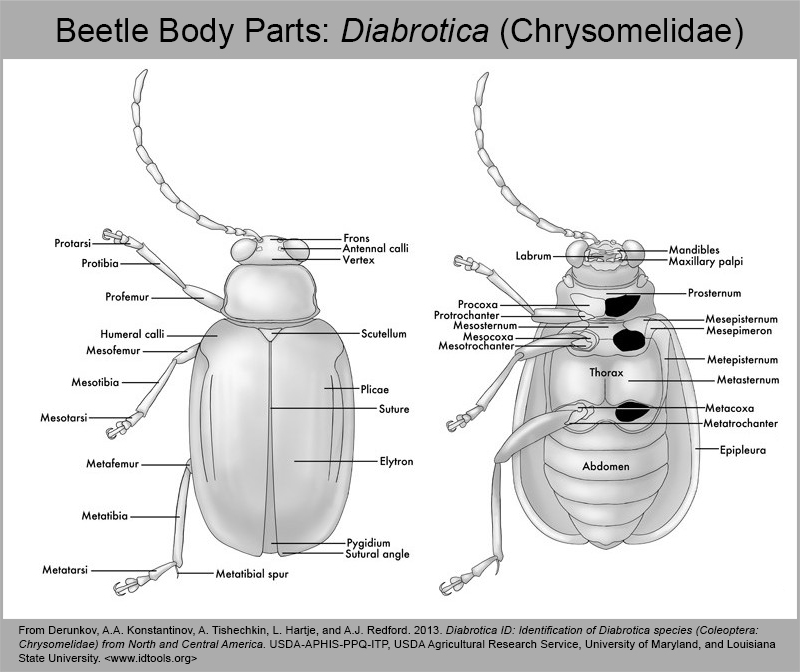 broad, 2–3 times as long as broad. First posterior tarsal segment not at least twice as long as following two segments combined. Scutellumscutellum:
broad, 2–3 times as long as broad. First posterior tarsal segment not at least twice as long as following two segments combined. Scutellumscutellum:
a small sclerite located directly posterior to the pronotum, bordered laterally by the elytra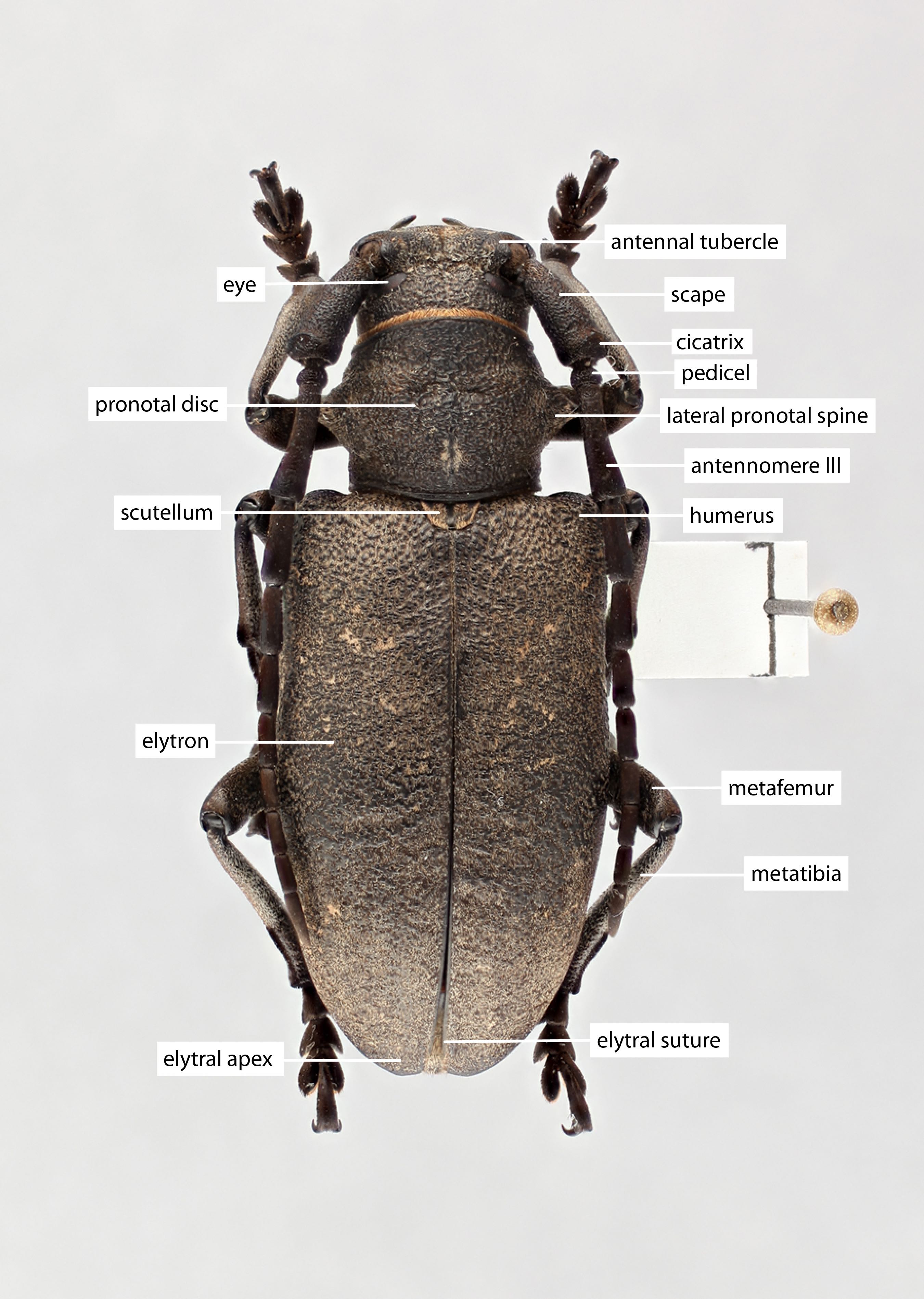 transversetransverse:
transversetransverse:
broader than long
, rounded posteriorly; posterior femora of male extending beyond elytral apicesapex:
end of any structure distad to the base
(Gressitt 1951Gressitt 1951:
Gressitt JL. 1951. Longicorn beetles of China. Longicornia, Paris 2: 1–667, 22 pls.).
Can be differentiated from Neoclytus by the lack of pronotal transversetransverse:
broader than long
carinaecarina:
an elevated ridge or keel, not necessarily high or acute
associated with that genus. The larvae of Clytus/Neoclytus are similar, but those of Clytus lack legs.
Nearctic, Palearctic, Indomalaya, Australasian
New World: Abies, Pseudotsuga, Pinus; various broadleaf
Old World: Pinaceae; various broadleaf
64 species. 10 New World. Conifer feeding: C. lama, C. arietoides, C. canadensis, C. marginicollis, C. pacificus, C. planifrons, C. blaisdelli, C. clitellarius. Questionable genus inclusions in Australia.
Xylotrechus (Europa) Thomson, 1861
Sphegesthes Chevrolat, 1863
Clytus Laicharting, 1784